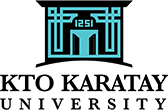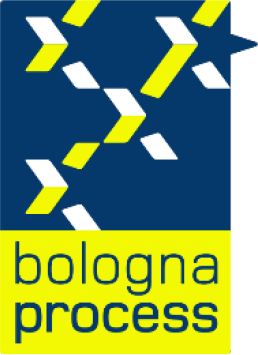Medical Imaging Techniques
Course Details

KTO KARATAY UNIVERSITY
Vocational School of Medical Services
Programme of Medical Imaging Techniques
Course Details
Vocational School of Medical Services
Programme of Medical Imaging Techniques
Course Details

| Course Code | Course Name | Year | Period | Semester | T+A+L | Credit | ECTS |
|---|---|---|---|---|---|---|---|
| 02931001 | Using Medicine with Care | 2 | Autumn | 3 | 2+0+0 | 3 | 3 |
| Course Type | Elective |
| Course Cycle | Associate (Short Cycle) (TQF-HE: Level 5 / QF-EHEA: Short Cycle / EQF-LLL: Level 5) |
| Course Language | Turkish |
| Methods and Techniques | - |
| Mode of Delivery | Face to Face |
| Prerequisites | - |
| Coordinator | - |
| Instructor(s) | - |
| Instructor Assistant(s) | - |
Course Content
Definition of rational drug use, principles, pharmacoeconomics, clinical examples
Objectives of the Course
With this course, it is aimed that the students learn about the importance of rational drug use, examples of irrational drug treatment, the causes and consequences of irrational drug use, the prevention of irrational drug use, and the principles of practice for rational drug treatment.
Contribution of the Course to Field Teaching
| Basic Vocational Courses | |
| Specialization / Field Courses | |
| Support Courses | |
| Transferable Skills Courses | |
| Humanities, Communication and Management Skills Courses |
Relationships between Course Learning Outcomes and Program Outcomes
| Relationship Levels | ||||
| Lowest | Low | Medium | High | Highest |
| 1 | 2 | 3 | 4 | 5 |
| # | Program Learning Outcomes | Level |
|---|---|---|
| P2 | Has knowledge of general medical terms, first aid issues related to anatomical and physiological issues related to the field of health, and uses applied knowledge. | 4 |
| P | 3 |
Course Learning Outcomes
| Upon the successful completion of this course, students will be able to: | |||
|---|---|---|---|
| No | Learning Outcomes | Outcome Relationship | Measurement Method ** |
| O1 | Ability to express basic theoretical knowledge about the field of health. | P.2.1 | 1 |
| O2 | Ability to understand the basic principles related to the field of health. | P.2.2 | 1 |
| O3 | Ability to integrate basic theoretical knowledge about health into the field of medical imaging techniques | P.2.3 | 1 |
| O4 | Ability to distinguish the basic elements of theoretical knowledge related to the field of health. | P.2.4 | 1 |
| O5 | Ability to develop strategies in the field of medical imaging techniques by combining basic theoretical and practical knowledge about the field of health. | P.2.5 | 1 |
| O6 | Making suggestions for improvements in the field of medical imaging techniques by using basic theoretical and practical knowledge about the field of health. | P.2.6 | 1 |
| ** Written Exam: 1, Oral Exam: 2, Homework: 3, Lab./Exam: 4, Seminar/Presentation: 5, Term Paper: 6, Application: 7 | |||
Weekly Detailed Course Contents
| Week | Topics |
|---|---|
| 1 | Dersin tanıtımı, giriş, amaç, öğrenim hedefleri |
| 2 | İlaçların uygulanma yolları |
| 3 | İlaçların Emilimi, Dağılımı, Biyotransformasyonu, Metabolizması ve Atılımı |
| 4 | İlaçların Etkisini Değiştiren Faktörler, İlaç Etkileşimleri |
| 5 | Akılcı İlaç Kullanımı Nedir |
| 6 | Akılcı İlaç Kullanım İlkeleri |
| 7 | Türkiye'de ve Dünyada Akılcı İlaç Kullanımı |
| 8 | Ara Sınav |
| 9 | Sağlık Hizmeti Sunanların ve Hizmet Alanların Akılcı İlaç Kullanımındaki Rolleri |
| 10 | Akılcı Olmayan İlaç Kullanımı Sonuçları |
| 11 | Farmakoekonomi |
| 12 | Özel Hasta Grubunda Akılcı İlaç Kullanımı |
| 13 | Akılcı Antibiyotik Kullanımı |
| 14 | Olgu Tartışmaları |
Textbook or Material
| Resources | ders notları |
Evaluation Method and Passing Criteria
| In-Term Studies | Quantity | Percentage |
|---|---|---|
| Attendance | - | - |
| Laboratory | - | - |
| Practice | - | - |
| Field Study | - | - |
| Course Specific Internship (If Any) | - | - |
| Homework | - | - |
| Presentation | - | - |
| Projects | - | - |
| Seminar | - | - |
| Quiz | - | - |
| Listening | - | - |
| Midterms | 1 | 40 (%) |
| Final Exam | 1 | 60 (%) |
| Total | 100 (%) | |
ECTS / Working Load Table
| Quantity | Duration | Total Work Load | |
|---|---|---|---|
| Course Week Number and Time | 14 | 2 | 28 |
| Out-of-Class Study Time (Pre-study, Library, Reinforcement) | 14 | 2 | 28 |
| Midterms | 1 | 14 | 14 |
| Quiz | 0 | 0 | 0 |
| Homework | 0 | 0 | 0 |
| Practice | 0 | 0 | 0 |
| Laboratory | 0 | 0 | 0 |
| Project | 0 | 0 | 0 |
| Workshop | 0 | 0 | 0 |
| Presentation/Seminar Preparation | 0 | 0 | 0 |
| Fieldwork | 0 | 0 | 0 |
| Final Exam | 1 | 20 | 20 |
| Other | 0 | 0 | 0 |
| Total Work Load: | 90 | ||
| Total Work Load / 30 | 3 | ||
| Course ECTS Credits: | 3 | ||
Course - Learning Outcomes Matrix
| Relationship Levels | ||||
| Lowest | Low | Medium | High | Highest |
| 1 | 2 | 3 | 4 | 5 |
| # | Learning Outcomes | P2 |
|---|---|---|
| O1 | Ability to express basic theoretical knowledge about the field of health. | 4 |
| O2 | Ability to understand the basic principles related to the field of health. | 4 |
| O3 | Ability to integrate basic theoretical knowledge about health into the field of medical imaging techniques | 4 |
| O4 | Ability to distinguish the basic elements of theoretical knowledge related to the field of health. | 4 |
| O5 | Ability to develop strategies in the field of medical imaging techniques by combining basic theoretical and practical knowledge about the field of health. | 4 |
| O6 | Making suggestions for improvements in the field of medical imaging techniques by using basic theoretical and practical knowledge about the field of health. | 4 |
